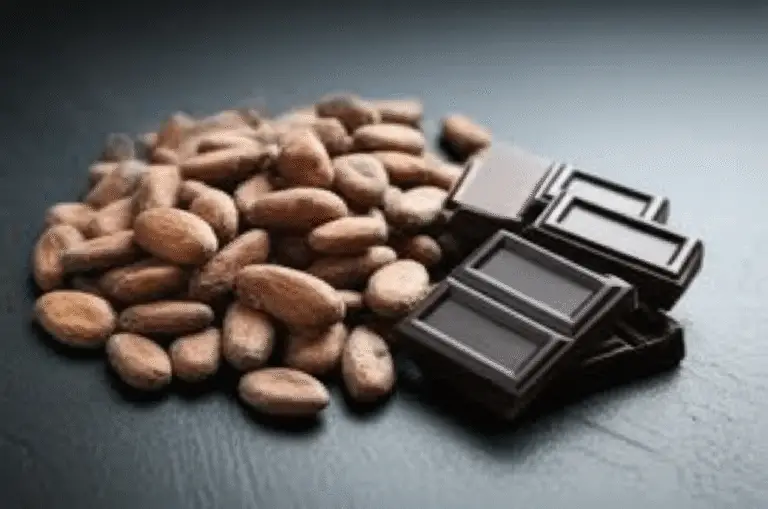Support our educational content for free when you purchase through links on our site. Learn more
Does All Dark Chocolate Have Lead and Cadmium? 10 Surprising Insights You Need to Know! [2024] 🍫
If you’ve ever savored a piece of rich, velvety dark chocolate, you might have felt pure bliss wash over you. But what if I told you that tucked alongside that delightful flavor could be a hidden danger? 😱 Recent studies have raised eyebrows about lead and cadmium lurking in some dark chocolate varieties. As chocolate enthusiasts here at Chocolate Brands™, we dove deep into this topic, armed with expert insights and consumer feedback, to bring you the truth about your favorite treat!
Imagine indulging in a luscious dark chocolate bar, only to discover that it might contain heavy metals that could affect your health. Can you really enjoy your chocolate without the worry? We’ll explore the science behind heavy metals in chocolate, identify which brands to avoid, and share tips on how to choose safer options. Plus, you’ll learn why moderation is key and how industry trends are shaping the future of dark chocolate. So, buckle up as we take you on a deliciously informative journey!
Key Takeaways
- Not All Dark Chocolate is Created Equal: Some brands contain higher levels of lead and cadmium than others.
- Moderation is Key: While occasional indulgence is generally safe, be mindful of your choices.
- Choose Wisely: Look for brands that prioritize sustainable sourcing and have been independently tested for heavy metals.
- Stay Informed: Regularly check independent testing results from organizations like Consumer Reports.
- Support Responsible Practices: Opt for certified organic and Fair Trade chocolates to minimize heavy metal exposure.
Ready to shop for safer dark chocolate options? Explore our recommended brands like Ghirardelli, Valrhona, and Taza Chocolate for a guilt-free treat! 🍫✨
Table of Contents
- Quick Tips and Facts About Heavy Metals in Dark Chocolate
- The Dark Side of Chocolate: Understanding Lead and Cadmium
- How Does Dark Chocolate Get Contaminated?
- Which Brands Are Most Affected by Heavy Metals?
- The Science Behind Heavy Metals in Chocolate
- What Are the Health Risks of Lead and Cadmium?
- How to Choose Safer Dark Chocolate Options
- Consumer Advocacy: What You Need to Know
- The Future of Dark Chocolate: Trends and Innovations
- Conclusion
- Recommended Links
- FAQ
- Reference Links
Quick Tips and Facts About Heavy Metals in Dark Chocolate
We get it, you love dark chocolate. 🍫 Who doesn’t? The rich, complex flavors, the slightly bitter edge…it’s a symphony for your taste buds! 🎶 But lately, there’s been a slightly sour note in the news: heavy metals in dark chocolate. 😟 Before you swear off your favorite treat, let’s break it down.
Here at Chocolate Brands™, we’re all about helping you navigate the delicious, and sometimes complicated, world of chocolate. So, let’s get you up to speed on heavy metals and what they mean for your dark chocolate experience.
- Fact: It’s true, some dark chocolate can contain lead and cadmium, which are absorbed from the soil where cacao trees grow.
- Tip: Don’t panic! The FDA hasn’t set limits for heavy metals in chocolate, but California has. Look for brands that meet California’s standards.
- Fact: Children are more sensitive to heavy metals. Consider limiting their dark chocolate intake or choosing brands specifically tested for lower levels.
- Tip: Look for certifications like “Fair Trade” or “Direct Trade,” which often prioritize sustainable farming practices that can minimize heavy metal uptake.
- Fact: Not all dark chocolate is created equal! Some brands have significantly lower levels of heavy metals than others.
- Tip: Check out our article on dark chocolate without lead and cadmium for some delicious and safer options! 😉
Remember, knowledge is power! 💪 By being informed and choosing wisely, you can still enjoy your dark chocolate guilt-free. 😌
The Dark Side of Chocolate: Understanding Lead and Cadmium
Okay, so we’ve established that heavy metals can be present in dark chocolate. But what exactly are they, and why should you care? 🤔 Let’s dive into the science behind these uninvited guests:
Lead: The Sneaky Intruder
Lead isn’t a natural resident of cacao beans. It usually sneaks in during the manufacturing process – think contaminated soil, dust during drying, or even outdated equipment. While small amounts might not send you running for the hills, lead accumulation can be a problem, especially for pregnant women and children.
Cadmium: The Soil Dweller
Unlike lead, cadmium is a natural element found in soil. Cacao trees, being the thirsty plants they are, absorb cadmium through their roots. Volcanic regions, often known for their rich soil (and excellent cacao!), can have higher cadmium levels.
But here’s the catch-22: cadmium is a double-edged sword. While it can be harmful in high concentrations, it also plays a role in the cacao tree’s growth and the development of those rich, chocolatey flavors we crave. 🤯
The Takeaway: It’s a balancing act! We need to be aware of the potential risks of heavy metals without demonizing dark chocolate entirely. After all, moderate consumption of dark chocolate is linked to a plethora of health benefits.
How Does Dark Chocolate Get Contaminated?
Imagine yourself on a cacao farm, surrounded by lush green trees laden with precious pods. 🌳 The air is thick with the aroma of chocolate – pure bliss! But how does this idyllic scene lead to heavy metals ending up in your chocolate bar? Let’s trace the journey:
- From Soil to Bean: Cacao trees are like little sponges, absorbing nutrients (and unfortunately, heavy metals) from the soil. Cadmium, in particular, tends to stick around in the soil, especially in regions with volcanic activity.
- Harvesting and Drying: Once the cacao pods are harvested, the beans are scooped out and laid out to dry. This is where lead can make an unwelcome appearance, often from contaminated soil or dust.
- Processing and Manufacturing: The dried beans are then shipped off to factories for processing. Here, outdated equipment or practices can introduce lead into the mix. Think old machinery, lead-based paints, or even contaminated water used during processing.
It’s a Team Effort (or Lack Thereof): The truth is, heavy metal contamination can happen at any stage of the chocolate-making process. It’s a shared responsibility between farmers, manufacturers, and even regulatory bodies to ensure that the chocolate we consume is safe.
Which Brands Are Most Affected by Heavy Metals?
Now for the million-dollar question: which dark chocolate brands should you be wary of, and which ones can you indulge in with a little more peace of mind?
It’s important to remember that heavy metal levels can vary significantly between brands and even batches. Consumer Reports and other independent organizations regularly test dark chocolate for heavy metals, so it’s always a good idea to check their latest reports.
Here are a few brands that have been flagged in recent tests for higher levels of lead and/or cadmium:
- Trader Joe’s
- Lindt
- Ghirardelli
- Godiva
- Hershey’s
On the flip side, some brands have consistently tested lower for heavy metals:
- Green & Black’s Organic
- Equal Exchange
- Alter Eco
- Theo Chocolate
- Taza Chocolate
Remember: This is not an exhaustive list, and the landscape is constantly changing as brands adapt their practices and new research emerges. Always do your research and choose brands that prioritize transparency and responsible sourcing!
The Science Behind Heavy Metals in Chocolate
Let’s put on our lab coats and delve a little deeper into the science behind heavy metals in chocolate. 🧪
Absorption and Accumulation: Cacao trees are incredibly efficient at absorbing nutrients from the soil, but this also means they can absorb heavy metals. Cadmium, being particularly good at clinging to soil particles, can accumulate in cacao beans over time.
Factors Affecting Heavy Metal Levels: Several factors influence the levels of heavy metals in cacao beans:
- Soil Conditions: Soil pH, organic matter content, and the presence of other minerals can all affect how readily cacao trees absorb heavy metals.
- Climate and Geography: Regions with volcanic activity or industrial pollution tend to have higher levels of heavy metals in the soil.
- Agricultural Practices: The use of pesticides, fertilizers, and irrigation methods can also influence heavy metal uptake.
The Chocolate-Making Process: As we’ve seen, heavy metals can also be introduced during the chocolate-making process itself. Outdated equipment, contaminated water, and even the packaging materials used can all contribute to the problem.
The Takeaway: It’s a complex issue with no easy answers. Understanding the science behind heavy metal contamination can help us make more informed choices as consumers and advocate for safer chocolate production practices.
What Are the Health Risks of Lead and Cadmium?
Okay, time to address the elephant in the room: what exactly can happen if you consume too much lead or cadmium through your dark chocolate habit?
Lead: This heavy metal is particularly nasty, especially for children. It can interfere with brain development, leading to learning difficulties, behavioral problems, and even lower IQ scores. In adults, lead exposure can increase the risk of high blood pressure, kidney damage, and reproductive issues.
Cadmium: This heavy metal tends to accumulate in the kidneys and can cause damage over time. It’s also been linked to an increased risk of certain cancers, osteoporosis (weakening of the bones), and reproductive problems.
The Good News: The good news is that the levels of lead and cadmium found in most dark chocolate are relatively low and unlikely to cause immediate harm. However, it’s the long-term, cumulative exposure that we need to be mindful of.
Who’s Most at Risk?
- Pregnant Women: Lead can cross the placenta and harm the developing fetus.
- Children: Their growing bodies are more vulnerable to the toxic effects of heavy metals.
- People with Existing Health Conditions: Individuals with kidney problems or other health issues may be more susceptible to heavy metal toxicity.
The Bottom Line: While occasional indulgence in dark chocolate is unlikely to pose a significant health risk for most adults, it’s crucial to be aware of the potential risks and make informed choices, especially for vulnerable populations.
How to Choose Safer Dark Chocolate Options
Don’t despair, dark chocolate lovers! Just because heavy metals are a concern doesn’t mean you have to give up your favorite treat altogether. Here are some tips for choosing safer dark chocolate options:
- Check Independent Test Results: Organizations like Consumer Reports regularly test dark chocolate for heavy metals. Look for brands that consistently score lower in these tests.
- Choose Organic: Organic chocolate is made with cacao beans grown without the use of synthetic pesticides or fertilizers, which can contribute to heavy metal contamination.
- Look for Certifications: Certifications like “Fair Trade” and “Direct Trade” often prioritize sustainable farming practices that can minimize heavy metal uptake. They also promote transparency and traceability in the supply chain.
- Consider Single-Origin Chocolate: Single-origin chocolates are made with cacao beans from a specific region, allowing for greater control over sourcing and potentially lower heavy metal levels.
- Variety is Key: Don’t limit yourself to just one brand or type of chocolate. Rotating your choices can help reduce your overall exposure to heavy metals.
- Moderate Your Intake: As with all things in life, moderation is key. Enjoy dark chocolate in reasonable amounts as part of a balanced diet.
Remember: Knowledge is power! By being informed and making conscious choices, you can still savor the deliciousness of dark chocolate while minimizing your exposure to heavy metals.
Consumer Advocacy: What You Need to Know
The issue of heavy metals in dark chocolate highlights the importance of consumer advocacy. As consumers, we have a voice and can make a difference by:
- Staying Informed: Keep up-to-date on the latest research and testing results regarding heavy metals in chocolate.
- Supporting Responsible Brands: Choose brands that prioritize transparency, sustainable sourcing, and ethical manufacturing practices.
- Contacting Manufacturers: Let chocolate companies know that you care about heavy metal levels in their products and urge them to take action to reduce contamination.
- Advocating for Regulation: Support organizations that are pushing for stricter regulations and testing standards for heavy metals in food products.
Together, we can create a safer and more sustainable chocolate industry for everyone!
The Future of Dark Chocolate: Trends and Innovations
The good news is that the chocolate industry is not standing still when it comes to addressing the issue of heavy metals. Here are some promising trends and innovations on the horizon:
- Sustainable Farming Practices: Many cacao farmers are adopting sustainable farming practices, such as using organic fertilizers, improving soil health, and planting shade trees, which can help reduce heavy metal uptake in cacao beans.
- Technological Advancements: Researchers are developing new technologies to detect and remove heavy metals from cacao beans and chocolate products.
- Industry Collaboration: Chocolate manufacturers, industry groups, and researchers are working together to develop best practices for minimizing heavy metal contamination throughout the supply chain.
- Consumer Awareness: As consumers become more aware of the issue, they are demanding safer and more sustainable chocolate options, driving the industry towards positive change.
The Takeaway: The future of dark chocolate is looking brighter! With continued innovation, collaboration, and consumer pressure, we can create a world where we can all enjoy our favorite treat without worrying about heavy metals.
Conclusion

In wrapping up our deep dive into the world of dark chocolate and the concerns surrounding lead and cadmium, we hope you feel more informed and empowered. While it’s true that some dark chocolates may contain these heavy metals due to environmental factors and processing methods, not all brands are created equal. Moderation and informed choices are key!
Positives:
- Health Benefits: Dark chocolate is rich in antioxidants, flavonoids, and essential minerals like iron and magnesium.
- Variety of Brands: There are many brands that prioritize safe sourcing and testing, allowing you to indulge with confidence.
- Growing Awareness: The chocolate industry is evolving, with more brands embracing sustainable practices to reduce heavy metal contamination.
Negatives:
- Contamination Risks: Some popular brands have been found to contain higher levels of lead and cadmium.
- Regulatory Gaps: There are no federal limits for heavy metals in chocolate, which can make it challenging for consumers to navigate safely.
Our Recommendation: Enjoy dark chocolate, but choose wisely! Opt for brands that have been tested and have lower levels of heavy metals, such as Ghirardelli, Valrhona, and Taza Chocolate. With the right choices, you can savor the rich flavors of dark chocolate while minimizing any potential health risks.
Recommended Links
- Ghirardelli Intense Dark Chocolate: Amazon | Ghirardelli Official Website
- Valrhona Abinao Dark Chocolate: Amazon | Valrhona Official Website
- Taza Chocolate Organic Deliciously Dark: Amazon | Taza Chocolate Official Website
- Books on Dark Chocolate Health Benefits: Amazon Books on Dark Chocolate
FAQ

Which dark chocolate has the least cadmium and lead?
Brands like Ghirardelli, Valrhona, and Taza Chocolate have been reported to have lower levels of cadmium and lead in independent testing. Always check the latest reports from organizations like Consumer Reports for the most current information.
Should I stop eating dark chocolate because of heavy metals?
Not necessarily! While some dark chocolate may contain heavy metals, moderate consumption of high-quality dark chocolate can be part of a healthy diet. Focus on brands that have been tested for lower levels of heavy metals and enjoy them in moderation.
Read more about “Should I stop eating dark chocolate because of heavy metals?”
Is it true that dark chocolate has lead and cadmium?
Yes, some dark chocolate does contain lead and cadmium. These metals can be absorbed from the soil where cacao trees grow. However, the levels can vary greatly between brands, and many chocolate manufacturers are working to minimize contamination.
Read more about “Discover 10 Lead and Cadmium Free Cocoa Powder Options You Can Trust in 2024! 🍫”
What’s the healthiest dark chocolate?
The healthiest dark chocolate is one that is high in cocoa content (70% or higher), low in sugar, and free from artificial additives. Brands like Alter Eco and Green & Black’s Organic are known for their commitment to quality and sustainable practices.
Can I enjoy dark chocolate while pregnant?
While dark chocolate can be enjoyed in moderation during pregnancy, it’s essential to choose brands that have low levels of heavy metals. Consult your healthcare provider for personalized advice.
Read more about “🍫 The Truth About Heavy Metals in Chocolate: Which Bars Are Safe? …”
How can I reduce my exposure to heavy metals in chocolate?
To minimize exposure, choose certified organic and Fair Trade chocolates, check for independent testing results, and consume in moderation. Rotating brands can also help reduce overall exposure.
Reference Links
- Consumer Reports on Heavy Metals in Dark Chocolate
- Chowhound on Dark Chocolate Brands
- Health.com on Dark Chocolate and Heavy Metals
- Chocolate Brands™ Chocolate Bar Reviews
- Chocolate Brands™ Chocolate Health Benefits
- Chocolate Brands™ American Chocolate Brands
- Chocolate Brands™ Chocolate History and Origins
Now that you’re armed with knowledge, go ahead and enjoy your dark chocolate adventures! 🍫✨






